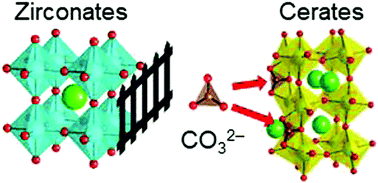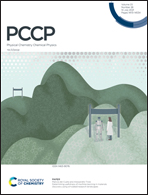Understanding carbon contamination in the proton-conducting zirconates and cerates†
Abstract
Carbon contamination is a significant concern for proton-conducting oxides in the cerate and zirconate family, particularly for BaCeO3. Here, we use first-principles calculations to evaluate carbon stability in SrCeO3, BaCeO3, SrZrO3, and BaZrO3. The cerates require more carbon-poor environments to prevent carbonate formation, though this requirement can be loosened through the use of more oxygen-poor growth conditions. Carbonate formation is not the only concern, however. We find that interstitial carbon has lower formation energies in the cerates relative to the zirconates, leading to higher carbon concentrations that compete with the desired oxygen vacancy formation. We also examine the mobility of carbon interstitials, finding that both migration barriers and binding energies to acceptors are lower in the cerates. As a result, the cerates are likely to degrade when exposed to carbon at operating temperatures. Our results show definitively why the cerates are less stable than the zirconates with respect to carbon and elucidate the mechanisms contributing to their instability, thereby helping to explain why alloying with zirconium will enhance their operational efficiency.

- This article is part of the themed collection: 2021 PCCP HOT Articles


 Please wait while we load your content...
Please wait while we load your content...